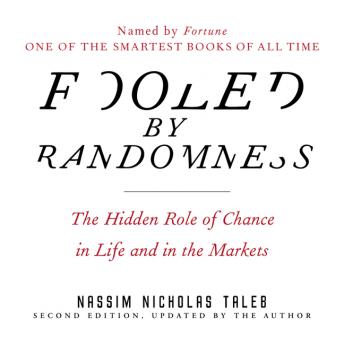

This occurs for instance in a speculative bubble, where one purchases an asset in the expectation that it will likely go up, but may plummet, and hopes to sell the asset before the bubble bursts.

If done consciously, with one's own capital or openly disclosed to investors, this is a risky strategy, but appeals to some: one will want to exit the trade before the rare event happens. This is done consciously by some as a risky trading strategy, while some critics argue that it is done either unconsciously by some, unaware of the hazards ("innocent fraud"), or consciously by others, particularly in hedge funds. Pursuing a trading strategy with a Taleb distribution yields a high probability of steady returns for a time, but with a risk of ruin that approaches eventual certainty over time. The fund manager does not repay his incentive fee." Criticism of trading strategies Intuitively, hedge funds are paid on an annual basis while disasters happen every four or five years, for example. More detailed and formal discussion of the bets on small probability events is in the academic essay by Taleb, called "Why Did the Crisis of 2008 Happen?" and in the 2004 paper in the Journal of Behavioral Finance called "Why Do We Prefer Asymmetric Payoffs?" in which he writes "agents risking other people’s capital would have the incentive to camouflage the properties by showing a steady income. Such kind of distributions have been studied in economic time series related to business cycles. It is a combination of kurtosis risk and skewness risk: overall returns are dominated by extreme events (kurtosis), which are to the downside (skew). In these situations the expected value is very much less than zero, but this fact is camouflaged by the appearance of low risk and steady returns.


The term is meant to refer to an investment returns profile in which there is a high probability of a small gain, and a small probability of a very large loss, which more than outweighs the gains. The concept is named after Nassim Nicholas Taleb, based on ideas outlined in his book Fooled by Randomness.Īccording to Taleb in Silent Risk, the term should be called "payoff" to reflect the importance of the payoff function of the underlying probability distribution, rather than the distribution itself. The term was coined by journalist Martin Wolf and economist John Kay to describe investments with a "high probability of a modest gain and a low probability of huge losses in any period." In economics and finance, a Taleb distribution is the statistical profile of an investment which normally provides a payoff of small positive returns, while carrying a small but significant risk of catastrophic losses.


 0 kommentar(er)
0 kommentar(er)
